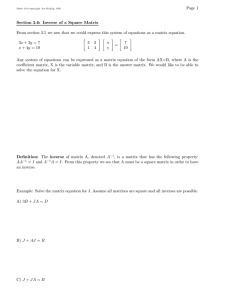Math 2270-3 Spring 2005 Information for Exam I
advertisement
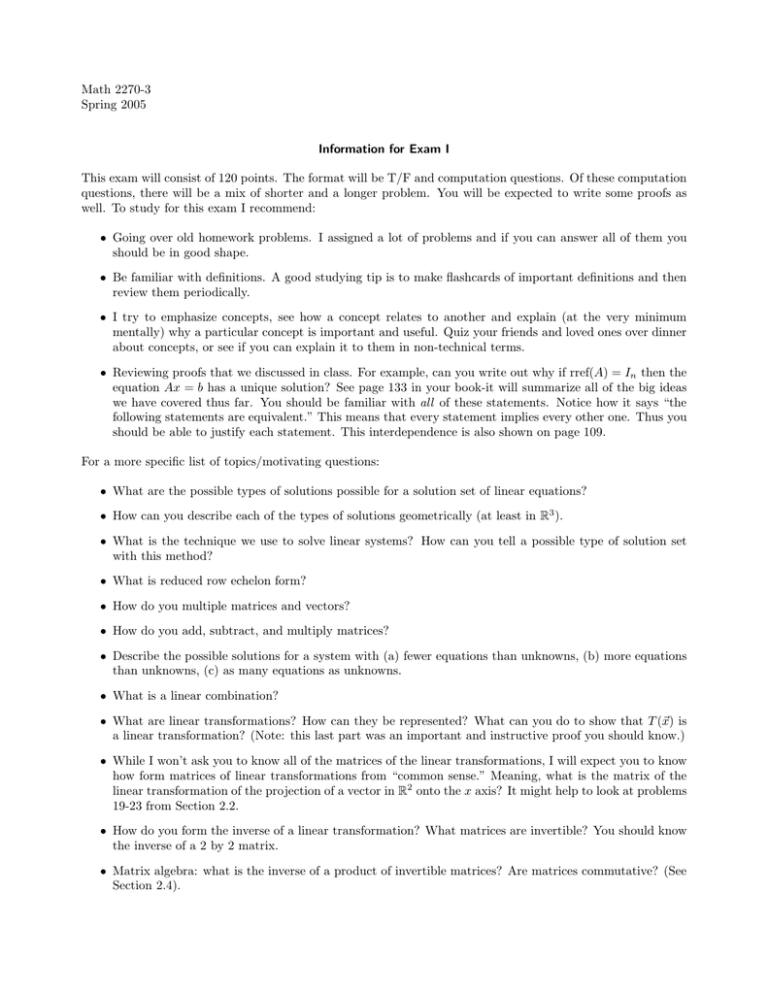
Math 2270-3 Spring 2005 Information for Exam I This exam will consist of 120 points. The format will be T/F and computation questions. Of these computation questions, there will be a mix of shorter and a longer problem. You will be expected to write some proofs as well. To study for this exam I recommend: • Going over old homework problems. I assigned a lot of problems and if you can answer all of them you should be in good shape. • Be familiar with definitions. A good studying tip is to make flashcards of important definitions and then review them periodically. • I try to emphasize concepts, see how a concept relates to another and explain (at the very minimum mentally) why a particular concept is important and useful. Quiz your friends and loved ones over dinner about concepts, or see if you can explain it to them in non-technical terms. • Reviewing proofs that we discussed in class. For example, can you write out why if rref(A) = In then the equation Ax = b has a unique solution? See page 133 in your book-it will summarize all of the big ideas we have covered thus far. You should be familiar with all of these statements. Notice how it says “the following statements are equivalent.” This means that every statement implies every other one. Thus you should be able to justify each statement. This interdependence is also shown on page 109. For a more specific list of topics/motivating questions: • What are the possible types of solutions possible for a solution set of linear equations? • How can you describe each of the types of solutions geometrically (at least in R3 ). • What is the technique we use to solve linear systems? How can you tell a possible type of solution set with this method? • What is reduced row echelon form? • How do you multiple matrices and vectors? • How do you add, subtract, and multiply matrices? • Describe the possible solutions for a system with (a) fewer equations than unknowns, (b) more equations than unknowns, (c) as many equations as unknowns. • What is a linear combination? • What are linear transformations? How can they be represented? What can you do to show that T (~x) is a linear transformation? (Note: this last part was an important and instructive proof you should know.) • While I won’t ask you to know all of the matrices of the linear transformations, I will expect you to know how form matrices of linear transformations from “common sense.” Meaning, what is the matrix of the linear transformation of the projection of a vector in R2 onto the x axis? It might help to look at problems 19-23 from Section 2.2. • How do you form the inverse of a linear transformation? What matrices are invertible? You should know the inverse of a 2 by 2 matrix. • Matrix algebra: what is the inverse of a product of invertible matrices? Are matrices commutative? (See Section 2.4). • What is the image and the kernel of a linear transformation? • Define the span of a set of vectors. • Define linear independence. • How can you tell if a set of vectors is linearly independent? • Define basis. • How do you find a basis for the image and the kernel of a set of vectors? • Define dimension. • What is the rank-nullity theorem? • There won’t be any questions on Section 3.4, however it is related to the matrix of a linear transformation. This section will appear again, so it is worth studying and being exposed to it.



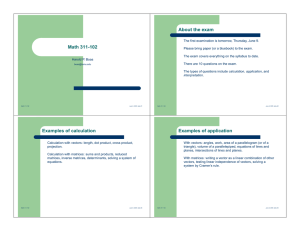
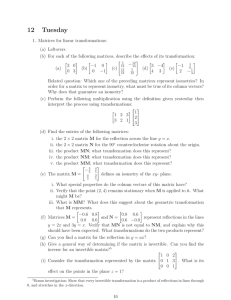

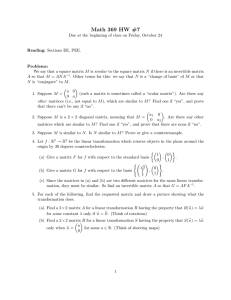


![1S2 (Timoney) Tutorial sheet 7 [January 7 – 11, 2008] Name: Solutions](http://s2.studylib.net/store/data/011011721_1-38e811b59e0f58e61108a5c182009186-300x300.png)
